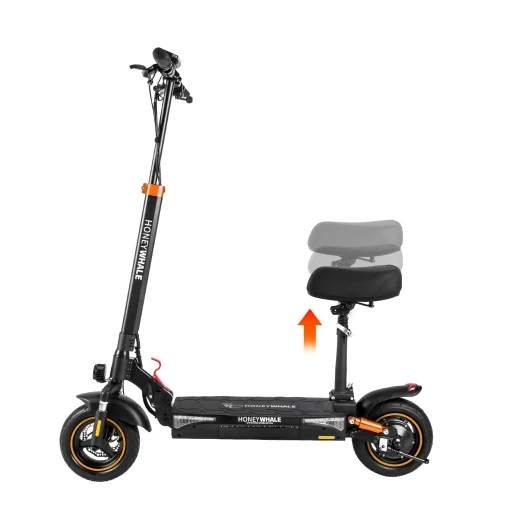Rules & Regulations
Electric Scooter Rules and Regulations
The electric scooter rules and regulations seem to be in a state of change at present. Here we will clarify what we know, and also what we experience as scooter riders.
If we start with this piece from the the NZTA website regarding low-powered vehicles, we find a definition of sorts:
‘Low-powered vehicles that do not require registration or a driver licence. The following do not meet the definition of a motor vehicle or have been declared not to be a motor vehicle and you can use them without registration or a driver’s licence.
Electric scooters or e-scooters. An electric scooter is designed in the style of a traditional push scooter, with a footboard, two or three wheels, a long steering handle and an electric auxiliary propulsion motor. In order to meet the requirements for a low-powered vehicle, the wheels must not exceed 355mm and the motor must have a maximum power output not exceeding 300W.
Please note: the maximum possible wattage stated of the electric motor is not necessarily the same as the maximum power output of the e-scooter. Maximum power output is determined by multiplying the battery voltage by the controller’s maximum amperage output. For example, a 600W motor and a 12V battery with a controller that has a maximum output of 21amps creates a maximum power output of 252W – so 252W is the relevant figure, even though the motor has a potential output of 600W.
E-scooters can be used on the footpath or the road – except in designated cycle lanes that are part of the road (which were designed for the sole use of cyclists).
On the footpath the user must:
Operate the device in a careful and considerate manner
Operate the device at a speed that does not put other footpath users at risk
Give way to both pedestrians and drivers of mobility devices.
On the road, e-scooters must be operated as near as practicable to the edge of the roadway. A helmet is not legally required to be worn when using an e-scooter, but is recommended.’
But then this Gazette (notice) was published (very quietly) on 18th September 2018. This was just prior to the launch of Lime Scooters in Auckland, and we feel it was perhaps lobbied by the operators of Lime to facilitate the launch (That’s just our opinion, Lime, please don’t sue us!):
E–SCOOTERS (DECLARATION NOT TO BE MOTOR VEHICLES) NOTICE 2018
Pursuant to section 168A(2) of the Land Transport Act 1998, and pursuant to an authority delegated to me by the Chief Executive of the New ZealandTransport Agency, I, Brandon Mainwaring, Senior Manager, Operational Policy, Planning and Performance, declare an electric scooter not to be a motor vehicle if all of the following apply:
The electric scooter is comprised primarily of a footboard, two or three wheels, and a long steering handle;
The electric scooter’s wheels do not exceed 355mm in diameter;
The electric scooter has one or more electric auxiliary propulsion motors; and
This notice expires on 30 September 2023. Dated at Wellington this 18th day of September 2018. BRANDON MAINWARING, Senior Manager, Operational Policy, Planning and Performance, NZ Transport Agency.’
So for now it look like you can ride scooters on the pavement, where there are lots of people in the way, and on the road, where you are in the way of lots of cars, but not in the bike lanes, which in Auckland have enjoyed $300million of investment to develop a world-class network, and which make the ideal environment to operate your electric scooter
Fortunately, the Mayor of Auckland agrees. and in an article on the Radio New Zealand website on 5th November 2018, the Auckland Mayor, Phil Goff is quoted as saying that e-scooters were not allowed to use cycle-ways but that needed to change.
“It makes much more sense for them to be on the cycleway than on the footpath.”
Mr Goff said that could require a regulatory change, which he would be pushing for. He also supported the idea of a speed-limit change, but said that may require the Transport Agency to change the law.
So at least there is someone with the right idea!
And what about those power output questions? Well, from what we hear, the NZ Police aren’t concerned with operation of scooters of any output, as they are not seen as motor vehicles and therefore don’t come under the jurisdiction of the traffic police. If an electric scooter is over 300W, and most are, what is it therefore defined as? I am not sure anybody can tell you.
To our knowledge, nobody is out there measuring motor output, and as there hasn’t been enough thought from the regulators around how speed, not power, is the measure to be wary of, there are at the time of writing no known speed traps for scooters. That doesn’t mean you should tear around like an idiot though. Scooters are heavy, solid objects. The biggest ones top 30kg, and if you hit someone, or something, you can do a lot of damage to yourself, the other person, or the ‘thing’.
We consistently find that the scooter riders least likely to crash are the owner-riders who ride with care and experience, who avoid congested areas, who regulate their speed to the environment, and who want to avoid damaging themselves and there lovely scooter. The ones most at risk? Intoxicated hoons tearing up the pavement on a rental scooter. It doesn’t take a genius to work that one out!
In New Zealand, regulations for e-bikes and mopeds are distinct, each with specific requirements:
E-Bikes (Electric Bicycles):
• Definition: An e-bike is a bicycle equipped with an auxiliary electric motor with a maximum power output of 300 watts. E-bikes output over 300W, only use on off-road.
• Usage: E-bikes are treated as standard bicycles, allowing access to cycle paths and shared pathways.
• Licensing and Registration: No driver’s license, registration, or vehicle licensing is required.
• Helmet Use: Wearing a helmet is mandatory for all cyclists, including e-bike riders.
• Speed Limit: There is no specific speed limit for e-bikes; however, riders must adhere to general road speed limits and ride safely.
Mopeds:
• Definition: A moped is a motor vehicle with two or three wheels, a maximum engine capacity of 50cc, and a top speed not exceeding 50 km/h.
• Licensing: Riders must hold at least a Class 1 (car) driver’s license.
• Registration and Licensing: Mopeds must be registered and display a valid license plate.
• Warrant of Fitness (WoF): Regular WoF inspections are not required for mopeds.
• Helmet Use: Wearing an approved helmet is compulsory for all moped riders.
• Road Usage: Mopeds are not permitted on footpaths or cycle paths and must adhere to standard road rules.
It’s essential for riders to understand these distinctions to ensure compliance with New Zealand’s transport regulations.For more information please check with NZTA to ensure not breach NZ Law. https://nzta.govt.nz/vehicles/vehicle-types/low-powered-vehicles
OUR DISCLAIMER
We don’t profess to have all the answers for you on what and where you can and can’t ride. The information on this page is intended to inform, and we ask that you satisfy yourself as to the requirements to operate your scooter purchase in your intended manner. At the time of writing (April 2019), we are not aware of a single incident of a scooter powered by motor of over 300Watts falling foul of any legalities, and indeed we have significantly more demand for the higher-powered scooters than the smaller ones, for the simple reason that if you want to climb hills comfortably, 300Watts isn’t going to do it for you!
We would love to hear your input and experiences, and in the meantime we will continue to push for sensible legislation to allow the expansion of scootering as a sport, a fun pastime, and a transport solution.


